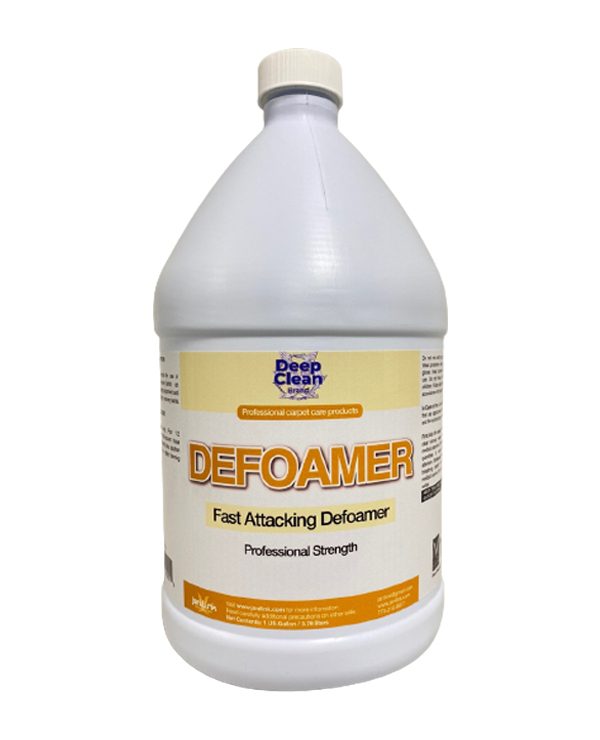The Function of Chemical Defoamer in Wastewater Processing
Wiki Article
How a Chemical Defoamer Can Improve Effectiveness in Your Workflow and Processes
In today's affordable commercial landscape, operational efficiency is extremely important, and the function of a chemical defoamer can not be forgotten. By addressing foam-related challenges that interfere with processes, defoamers not just promote smoother procedures however likewise contribute to cost savings and improved product high quality.Understanding Chemical Defoamers
Chemical defoamers play a vital duty in various commercial procedures by effectively protecting against and lowering foam formation. Frothing can lead to functional inefficiencies, raised production costs, and endangered product quality. Defoamers are specialized chemical ingredients made to disrupt the security of foam bubbles, therefore enabling smoother processing and boosted efficiency across several sectors, consisting of food and drink, drugs, and wastewater treatment.
These agents commonly consist of surfactants, oils, or polymeric compounds that reduced the surface stress of the liquid, assisting in the collapse of foam. The device by which defoamers operate frequently entails the destabilization of foam structures, permitting for quicker drain of fluid and the launch of caught air. Different formulas are tailored to details applications, taking into consideration elements such as compatibility with the system, temperature, and the nature of the liquid being treated.
Recognizing the composition and capability of chemical defoamers is necessary for choosing the proper item for a given application. By optimizing defoamer option based upon procedure needs, markets can boost functional efficiency, alleviate foam-related challenges, and inevitably improve total efficiency.
Advantages of Utilizing Defoamers
Utilizing defoamers can significantly enhance functional effectiveness across various industries by successfully alleviating foam-related concerns. The existence of foam can disrupt procedures, causing boosted downtime, lowered performance, and prospective quality degradation in end products. Defoamers assist fight these challenges by damaging down foam frameworks, consequently enabling smoother operations.Among the key advantages of making use of defoamers is the reduction of waste and revamp. By lessening foam development, defoamers boost the uniformity of processes, guaranteeing that products are used efficiently. This not only decreases functional expenses yet also adds to sustainability campaigns by decreasing source usage.
Additionally, defoamers can enhance product top quality. In manufacturing setups, extreme foam can lead to inconsistencies in item attributes, affecting client complete satisfaction. By managing foam levels, defoamers aid keep the preferred physical residential properties of products.

Applications in Numerous Industries
The performance of defoamers expands across a variety of industries, where their application addresses particular foam-related difficulties intrinsic per sector. In the food and beverage industry, defoamers are vital for maximizing manufacturing procedures, such as developing and milk handling, where excessive foam can hinder flow prices and minimize performance. By decreasing foam, these representatives boost item top quality and uniformity.In the chemical production field, defoamers are employed in procedures like paint manufacturing and wastewater therapy. Below, they protect against foam development that can conflict with blending and different stages, thus improving the overall performance and performance of procedures.
In drugs, defoamers play an essential duty in the solution of fluid drugs, guaranteeing proper dosage and security by regulating foam throughout blending and storage. (Chemical Defoamer)
Additionally, in the agricultural field, defoamers are made use of in pesticide solutions to boost application effectiveness and reduce waste.
Selecting the Right Defoamer
Choosing the ideal defoamer is critical for attaining ideal performance in different applications. The choice process should start with a complete understanding of the certain problems check at hand, consisting of the kind of foam present, the handling conditions, and the chemical compatibility with other solution elements.Defoamers are formulated from a selection of materials, consisting of silicone, mineral oils, and fats. Identifying the appropriate structure is important, as various materials show varying effectiveness in varied environments. Silicone-based defoamers are frequently preferred in high-temperature applications due to their stability, while natural defoamers may be a lot more appropriate for water-based systems.
In addition, think about the defoamer's effect on the end product. Some formulas can alter the practical or visual properties, making it imperative to choose a defoamer that fulfills product requirements without compromising high quality.
Testing is one more essential step in choosing have a peek here a defoamer. Small-scale trials can give valuable insights right into the defoamer's performance, enabling changes prior to full-scale application. By meticulously assessing these aspects, businesses can enhance effectiveness and make certain that the defoamer effectively satisfies their functional demands.
Ideal Practices for Implementation
Executing a defoamer successfully calls for mindful planning and adherence to best methods to optimize its performance. Perform a comprehensive assessment of the particular application and foam attributes. Recognizing the type and source of foam will guide the selection of the most suitable defoamer formula.Next, establish the ideal dose (Chemical Defoamer). Begin with a small-scale trial to determine the minimum effective concentration, as excessive usage can lead to adverse impacts on product quality or functional effectiveness
Surveillance and adjusting the application technique is important; guarantee that the defoamer is introduced at the best factor at the same time for optimal effect, such as throughout blending or promptly after foam development.

In see post addition, maintain clear interaction with all pertinent personnel to make sure regular application practices and to share understandings on efficiency outcomes.
Verdict
In conclusion, the usage of chemical defoamers plays an essential function in improving functional effectiveness across diverse markets. Eventually, the unification of defoamers right into commercial procedures promotes dependability and contributes to overall performance enhancement.

In the food and drink industry, defoamers are critical for enhancing manufacturing procedures, such as brewing and dairy products handling, where too much foam can hinder flow prices and lower efficiency. Silicone-based defoamers are typically preferred in high-temperature applications due to their security, while organic defoamers might be extra suitable for water-based systems.
Report this wiki page